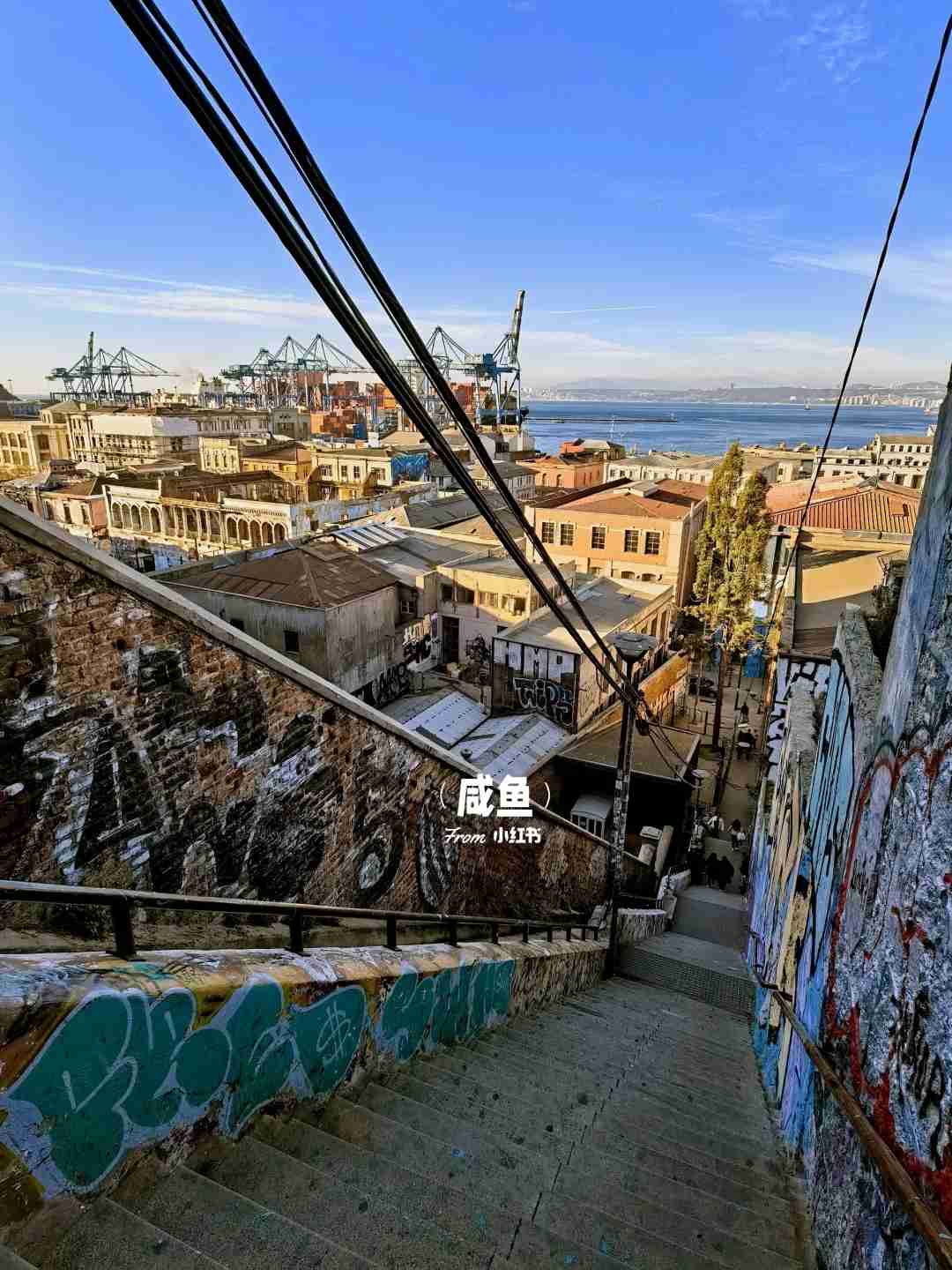The first impression of Valparaiso I had was from a slide in a Latin American politics class during my junior year. It seemed to be about the death of Neruda, which occurred a few days after the 1973 coup in Chile, and it was only in recent years that it was discovered he died from poisoning. The teacher showed a picture of the funicular and Neruda’s residence, La Sebastiana, in Valparaiso.

On the second weekend after arriving in Chile, I decided to explore this World Heritage city.
End of the introduction, let’s get to the practical information
1. Transportation: Although the railway from Santiago to Valparaiso was one of the significant achievements of early industrialization in Chile, much of it was dismantled during the Pinochet government to promote road transportation.

Therefore, the two cities are now mainly connected by bus. Almost all bus companies operate this route. I took Flixbus, and a round trip ticket booked a week in advance cost less than 6000 pesos.
2. Route:
Right across from the bus station, through the dense crowd of street vendors, you can see the building of the Chilean Congress.

You can take bus 612 directly to La Sebastiana (all buses not going uphill cost 320, while those going uphill cost 380 or more. With a Chilean student ID, the ticket for La Sebastiana is 3500, normally it’s 9500, and photography is not allowed inside). On the way up the hill with bus 612, you can see the well-planned lower part of the city, and pass by an abandoned funicular line (Ascensor Mariposas), which has become a playground for cats.

I later specifically went down the hill to see this funicular.
After leaving La Sebastiana, I passed through the Bellavista neighborhood and reached near the Reina Victoria funicular (100 pesos). After going up the hill, I basically followed the walking tour routes like tours4tips (posted in the comments section), but I also detoured to the top of Cerro Alegre to look at the sea.

The World Heritage area of Valparaiso mainly includes Cerro Alegre, Cerro Concepcion, and Barrio Puerto. Later, I descended from the west side, specially taking the San Agustin funicular back up the hill, then descended again through Cordillera (closed for repairs) and crossed Barrio Puerto (which has not recovered from the earthquake, with many collapsed houses, relatively chaotic) to reach the hill where the Naval Museum is located (student ticket 700 pesos, mainly about the hero Arturo Prat from the Battle of Iquique, the nearby Artilleria funicular has been abandoned for many years).

From the hill, you can see the port and the city of Valparaiso, and further away, the neighboring city of Vina del Mar (which didn’t attract me much, so I skipped it). I then rushed back to the viewpoint above Reina Victoria to watch the sunset, which is quite photogenic on a clear day.
I’ve always felt that Xiaohongshu is not a good platform for sharing travel guides.

Due to the character limit, my guide feels more like a personal diary, and I genuinely miss the days of exploring with Qyer, Backpack Inn, and Mafengwo. Those platforms were more than just travel guides; they were companions on every journey, offering a wealth of insights and a sense of community that made each adventure feel more connected and meaningful.
